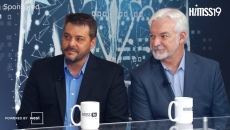Quality and Safety
Jill Kinney said in the face of disaster, training saved lives. And as a health system, your job isn't just to heal patients. In the face of tragedy, you must heal your wounded staff too.
There appears to be a lack of accountability when it comes to prescribing high-test opioids to patients who already have a tolerance.
(Sponsored) Providers continue to struggle to secure medical devices while working to bring greater access to data and improved treatment.
(Sponsored) A new AI-powered dashboard helps providers monitor, track, treat and prevent hospital-acquired infections and improve patient health during hospital stays.
A regimen using antiseptic soap, mouthwash, and nose ointment after hospital discharge reduced infections and infection-associated hospitalizations due to MRSA in high-risk patients.
(Sponsored) Not only does AI give providers the ability to better monitor their systems and premises, it also offers real-time response and correction across their networks and facilities.
(Sponsored) With video conferencing and mobile apps, providers are able to offer patients more touchpoints to improve engagement, experience and outcomes at the same time.
Navigant says 21 percent are at high risk of closing based on their total operating margin, days cash on hand, and debt-to-capitalization ratio.
Hospitals are nipping and tucking their supply chain spend by opting for half-price, reprocessed items like cardiology catheters.
Bruce Snell of NTT Security told his audience at HIMSS19 that forgetting to safeguard your less prominent assets can spell disaster for your system.



